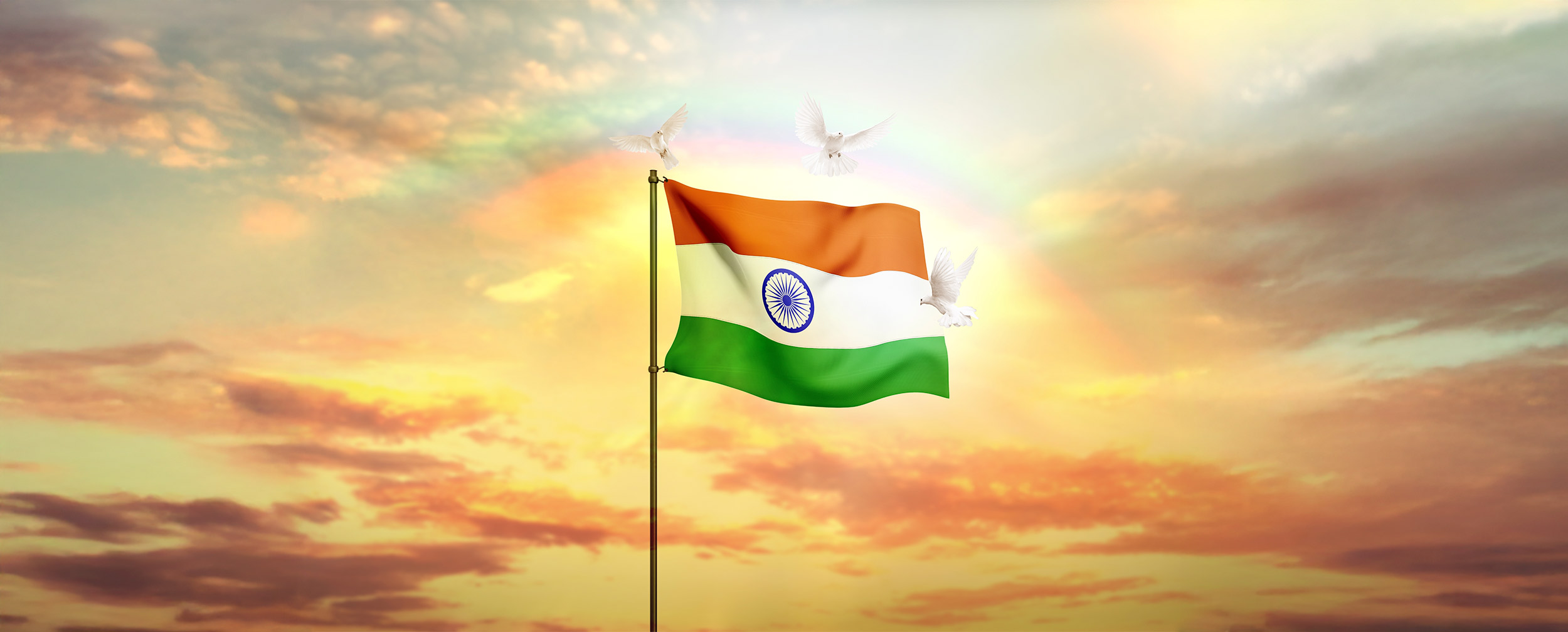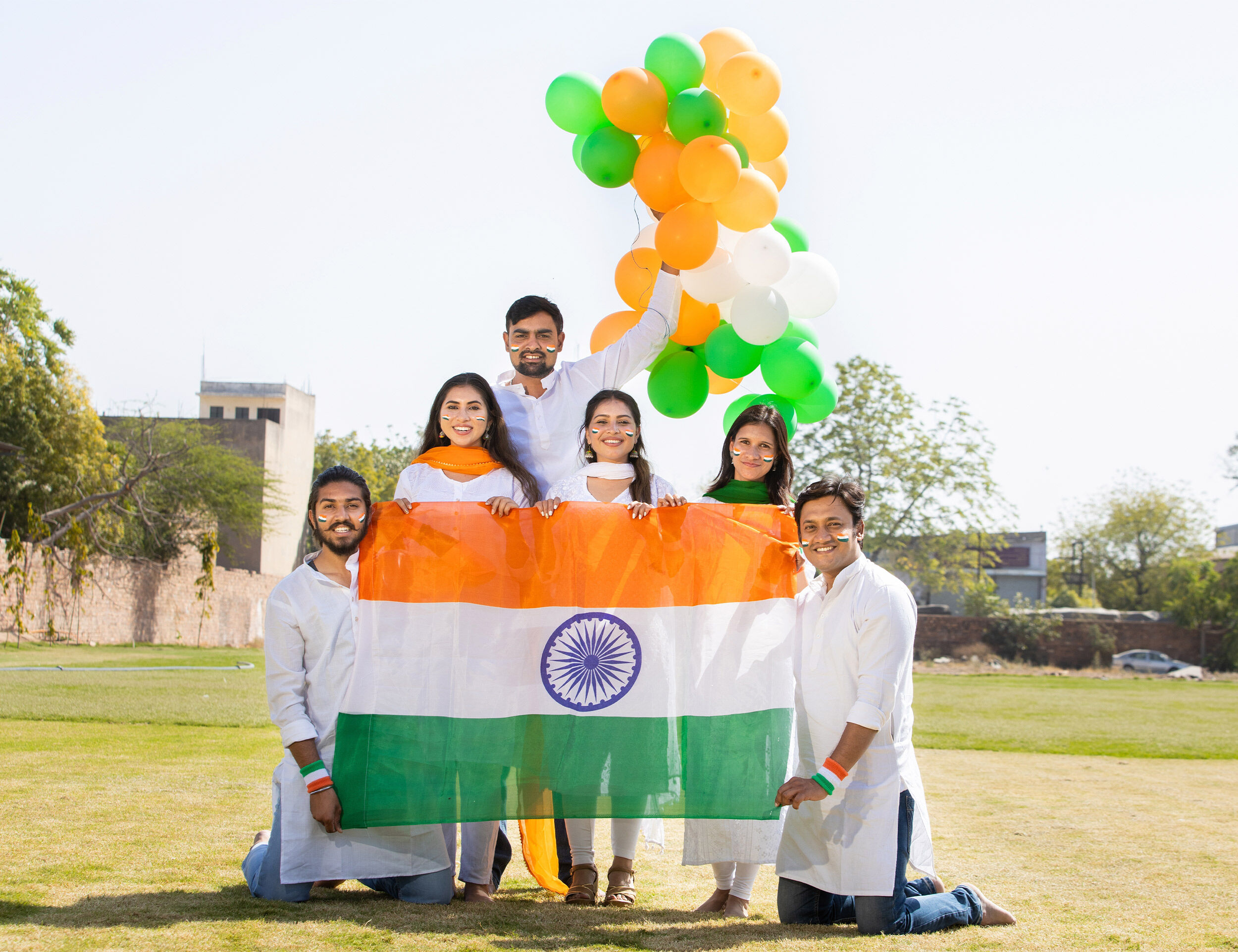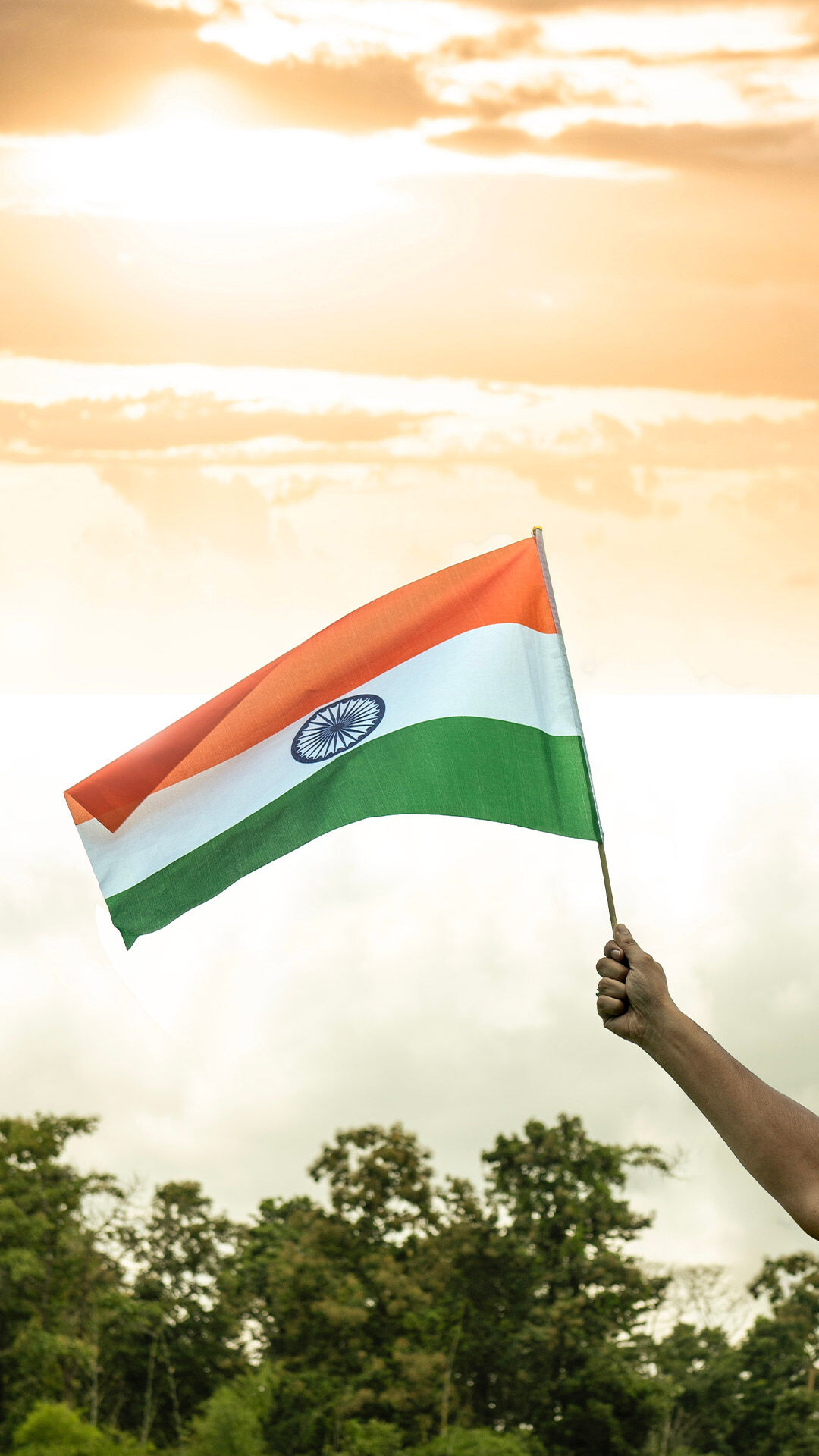STORIES BY MANYAVAR & MOHEY

Lifestyle
The Story Behind 15th August: Why Do We Celebrate Independence Day?
Date 14 July 2025 Reading time: 7-10 mins
August 15th brings with it a special feeling, a mix of pride, gratitude, and joy that connects 1.4 billion Indians with their shared history. But have you ever paused to consider why do we celebrate Independence Day on this particular date?
As we explore the historical background and significance of celebrating Independence Day, we'll also look at how this national festival inspires celebration styles across the country, from patriotic clothing choices to cultural expressions that honour our journey to freedom.
Historical Background
Before diving into the reasons to celebrate Independence Day specifically on August 15th, we need to understand the context of British colonial rule and the struggle for freedom that preceded it.
British Colonial Rule in India
The British presence in India began innocuously through the East India Company around 1765. What started as a trading enterprise gradually transformed into political control, expanding across the subcontinent. Following the significant uprising of 1857—often called India's First War of Independence—power transferred directly to the British Crown, beginning the period known as the British Raj.
For nearly 200 years, Indians lived under foreign rule, experiencing exploitation of resources, discriminatory policies, and cultural suppression. This colonial experience fundamentally shaped the Independence Day celebration with such reverence today. It represents the end of subjugation and the beginning of self-determination.
The colonial period saw massive economic exploitation. India, once accounting for almost a quarter of the world's manufacturing output, was reduced to a supplier of raw materials and a market for British-manufactured goods. This economic drain formed a powerful motivation behind why we celebrate Independence Day on 15 August. It marks the moment India regained control of its economic destiny.
The Freedom Struggle and Key Movements
The Indian independence movement developed through several phases and strategies, growing from elite petitioning to mass mobilisation. Understanding this journey helps explain why we should celebrate Independence Day with such national pride.
- Moderate Phase (1885-1905): Early Congress leaders used petitions and constitutional methods
- Swadeshi Movement (1905-1911): Boycott of British goods following the partition of Bengal
- Home Rule Movement (1916-1918): Campaign for self-governance within the British Empire
- Non-Cooperation Movement (1920-1922): First mass movement led by Mahatma Gandhi
- Civil Disobedience Movement (1930-1934): Salt Satyagraha and widespread civil disobedience
- Quit India Movement (1942): Final push demanding complete independence
These movements involved millions of ordinary Indians who risked imprisonment, livelihoods, and even their lives. This widespread sacrifice forms the emotional core of why do we celebrate Independence Day—to honour those who made freedom possible.
Why 15th August?
The specific choice of August 15th as India's Independence Day has fascinating historical roots that many Indians may not fully know about. Let's explore the exact reasons behind celebrating Independence Day on this particular date.
Final Steps Toward Independence
By the mid-1940s, several factors had converged to make Indian independence inevitable:
- World War II had severely weakened Britain financially and militarily
- The newly elected Labour government in Britain was more sympathetic to Indian independence
- The Royal Indian Navy Mutiny of 1946 signalled that Britain could no longer rely on Indian forces
- Mounting pressure from Indian political leaders and mass movements made continued colonial rule untenable
These developments accelerated the timeline for independence. According to C. Rajagopalachari, a prominent independence activist and politician, if Lord Mountbatten (the last Viceroy) had delayed until the originally planned date of June 1948, "there would have been no power left to transfer." This urgency partially explains the reasons behind celebrating Independence Day earlier than initially expected.
The Role of the Indian Independence Act 1947
The formal mechanism for India's independence came through the Indian Independence Act 1947, passed by the UK Parliament. This legislation:
- Ended British rule in India, effective August 15, 1947
- Partitioned British India into two independent dominions: India and Pakistan
- Transferred legislative sovereignty to the Indian Constituent Assembly
- Maintained King George VI as India's head of state until the adoption of a republican constitution
The passage of this bill was remarkably swift—introduced on July 4, 1947, and approved within just two weeks. This legislative action provides the legal foundation for celebrating Independence Day as the moment of sovereignty transfer.
Lord Mountbatten's Decision on the Date
Perhaps the most interesting aspect of celebrating Independence Day on 15 August involves Lord Mountbatten's personal decision. When asked about setting a date for independence, Mountbatten later admitted: "The date I chose came out of the blue. I chose it in reply to a question. I was determined to show I was master of the whole event."
Mountbatten selected August 15, 1947, specifically because it coincided with the second anniversary of Japan's surrender in World War II. As the Supreme Allied Commander of South-East Asia during the war, this date held personal significance for him. This connection to global military history adds another dimension to the reasons for celebrating Independence Day on this specific date. It links India's freedom to the broader post-war restructuring of the world order.
Significance of Celebrating on This Date
The date of August 15th carries multiple layers of meaning that explain why we should celebrate Independence Day with such reverence and joy.
Symbol of Freedom and Sovereignty
August 15, 1947, represents the moment when India reclaimed its right to self-determination after centuries of foreign rule. The date symbolises:
- The end of colonial subjugation and exploitation
- The beginning of India's journey as a sovereign nation
- The triumph of non-violent resistance and civil disobedience as powerful political tools
- The fulfilment of the dreams and aspirations of generations of freedom fighters
This transition to sovereignty forms the core reason for celebrating Independence Day with such national pride. It marked the moment when Indians gained the power to govern themselves according to their constitution and laws, free from external control.
Commemoration of Sacrifices Made
Perhaps the most emotionally resonant aspect of why we celebrate Independence Day on 15 August is to honour the countless sacrifices made during the freedom struggle:
- Thousands were imprisoned during various movements
- Many gave up comfortable lives and careers to join the struggle
- Numerous freedom fighters faced torture, transportation to penal colonies, and execution
- Ordinary citizens endured economic hardships through boycotts and non-cooperation
How Independence Day is Celebrated
The diverse celebrations across India reveal much about the celebration of Independence Day with such enthusiasm and in such varied ways.
Flag Hoisting Ceremonies
The most iconic Independence Day tradition is the flag hoisting ceremony at the Red Fort in Delhi, where the Prime Minister addresses the nation. This tradition began with Jawaharlal Nehru hoisting the Indian national flag above the Lahori Gate in 1947 and continues to this day.
Similar ceremonies take place across the country:
- Government offices and institutions hold formal flag hoistings
- Schools organise special assemblies with flag hoisting and patriotic performances
- Residential communities gather for neighbourhood celebrations
- Corporate offices mark the occasion with flag ceremonies and cultural events
These ceremonies demonstrate why we should celebrate Independence Day as a collective national experience that unites Indians across regional, linguistic, and cultural differences.
Cultural Programs and Speeches
Independence Day celebrations feature rich cultural expressions that showcase India's diversity while highlighting why we celebrate Independence Day on 15 August:
- Patriotic songs like "Jana Gana Mana," "Vande Mataram," and "Sare Jahan Se Accha"
- Folk dances representing different states and regions
- Dramatic performances depicting scenes from the freedom struggle
- Recitations of patriotic poetry and speeches by freedom fighters
These cultural programs serve both to entertain and educate, ensuring younger generations understand the significance of celebrating Independence Day and connect with their national history.
Honouring Freedom Fighters
A central aspect of Independence Day observances involves paying tribute to freedom fighters—both the famous leaders and the countless unnamed participants whose sacrifices explain why we should celebrate Independence Day with gratitude.
Many celebrations include:
- Garlanding statues of freedom fighters
- Special exhibitions showcasing the independence movement
- Documentary screenings about the freedom struggle
- Awards and recognition for veterans of the independence movement
These commemorative activities ensure that the personal stories behind celebrating Independence Day on 15 August remain alive in public memory.
Remembering the Journey to Freedom
As we've explored throughout this article, why we celebrate Independence Day on August 15th connects to a complex historical journey. The date marks not just a legal transfer of power but the culmination of decades of struggle, sacrifice, and determined resistance to colonial rule.
Understanding why we celebrate Independence Day on 15 August helps us appreciate both the historical circumstances and the profound meaning of this national observance. The principles that continue to guide the nation's development explain why we should celebrate Independence Day not just as a historical commemoration but as an affirmation of ongoing national aspirations.
As you prepare to celebrate this Independence Day, consider expressing your patriotic spirit through your choice of attire. Manyavar offers a range of classic Indian wear perfect for the occasion, while Mohey provides beautiful options for women seeking to celebrate in style.







